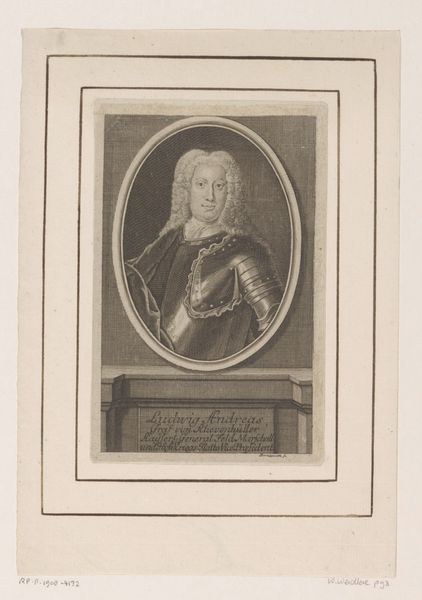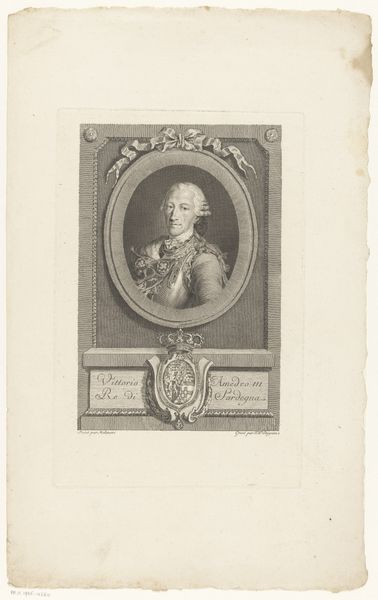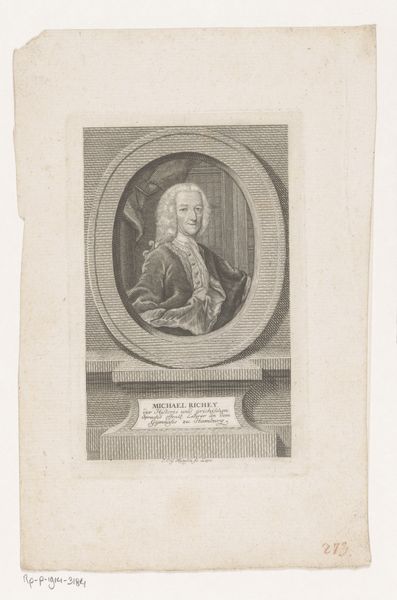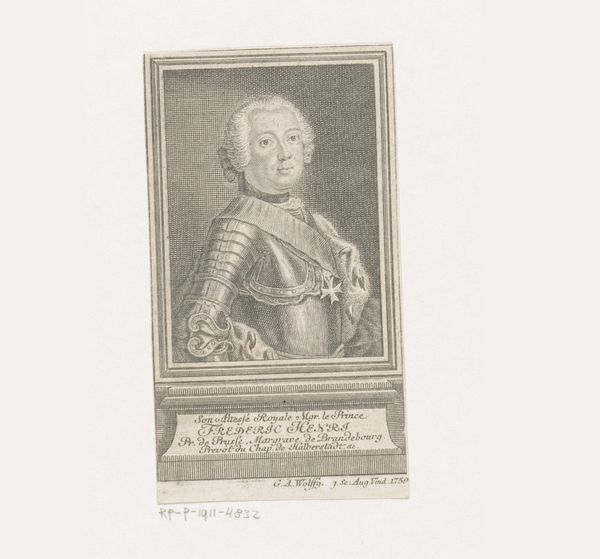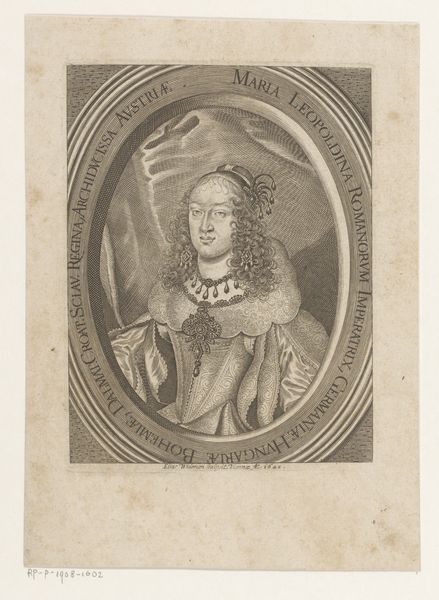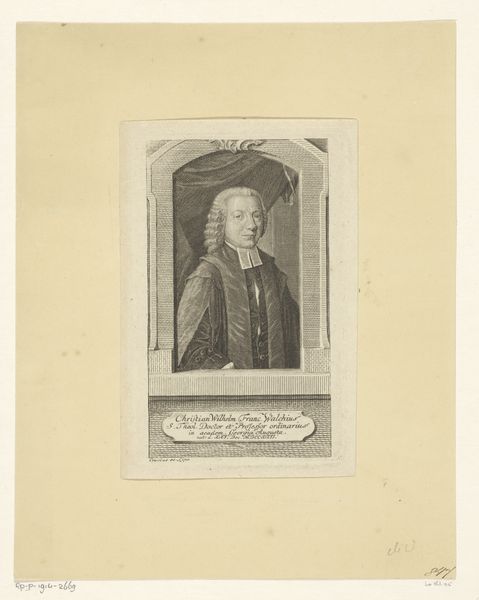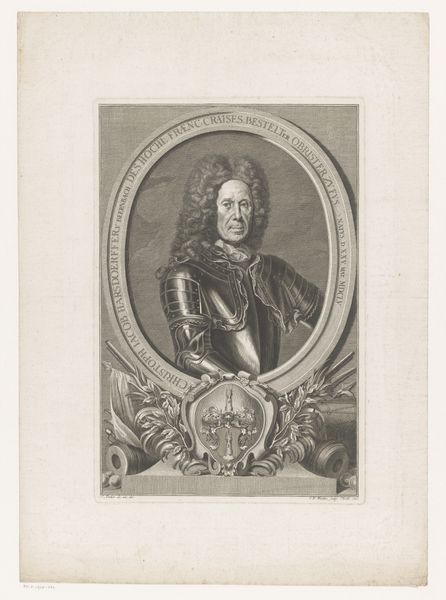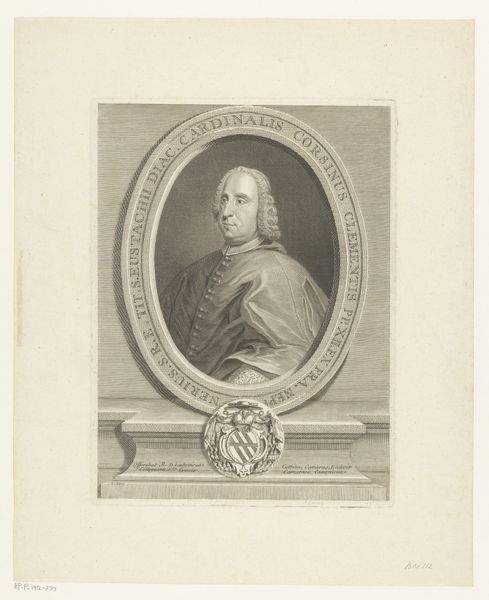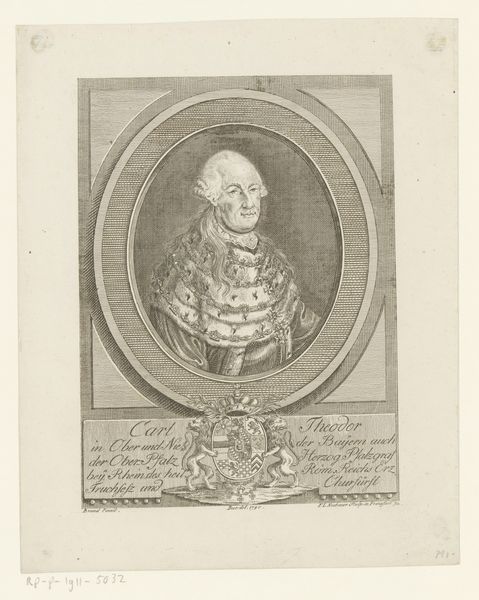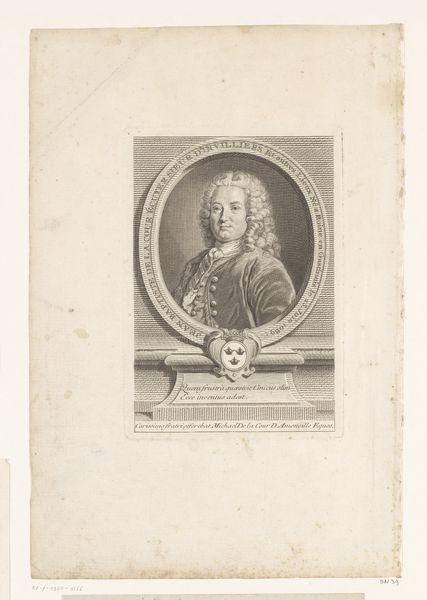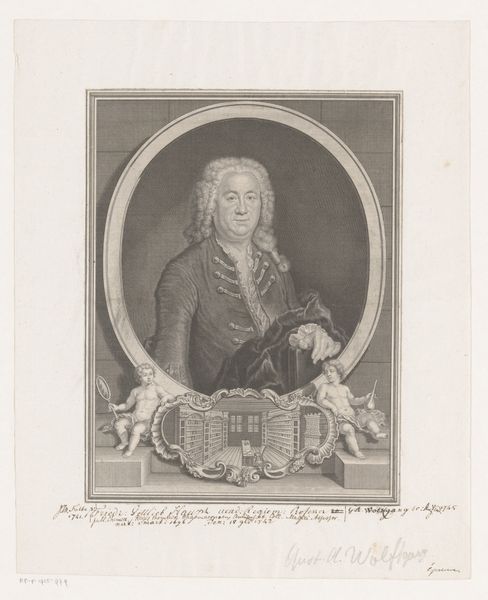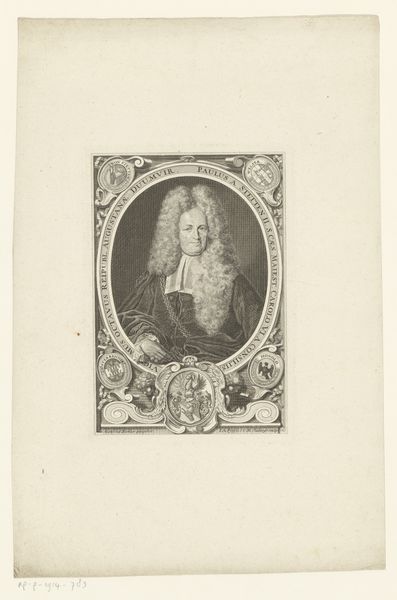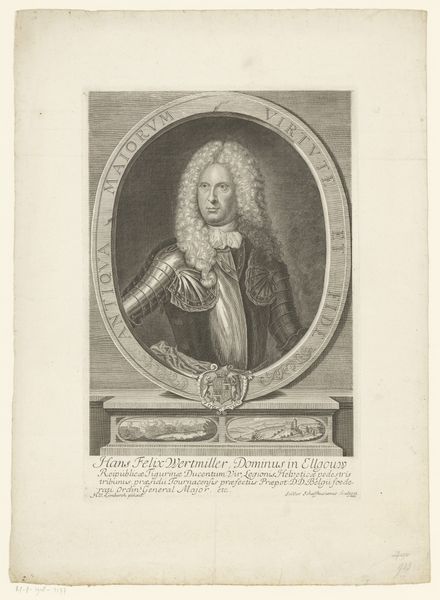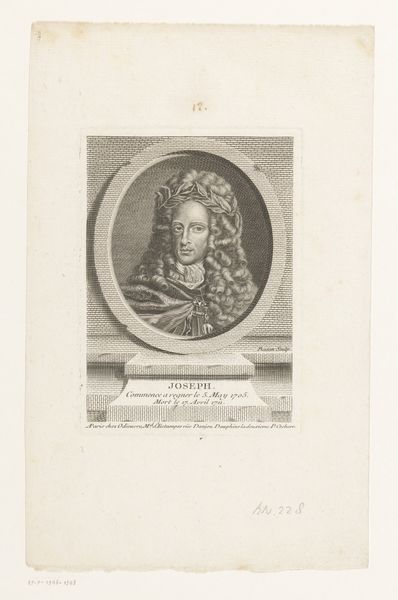
drawing, print, pencil, engraving
#
portrait
#
drawing
#
neoclacissism
# print
#
figuration
#
pencil drawing
#
pencil
#
line
#
academic-art
#
engraving
Dimensions: height 175 mm, width 113 mm
Copyright: Rijks Museum: Open Domain
Editor: We’re looking at Johann Michael Schramm's "Portret van Josef August von Törring," created around 1835. It’s a pencil engraving, a meticulously rendered portrait. I'm struck by the layering of textures – the delicate lace juxtaposed with the rigid lines of the background. How do you approach a piece like this from a formalist perspective? Curator: Indeed. We observe here a study in contrasts, not merely of texture but also of form. Note how the oval of the portrait contrasts against the rectilinear backdrop. Schramm directs the viewer's gaze inwards using anaphora by replicating subtle internal forms, creating patterns and guiding the eye. Editor: So you're saying that the composition itself tells the story, independent of who Josef August von Törring actually was? Curator: Precisely. Disregard, for a moment, the representational aspect. Consider instead the artist's choices regarding line, value, and the spatial relationships between elements. Observe how the sharp, precise lines create definition while the soft gradations suggest volume. It begs the question of whether the composition transcends representation, becoming its own entity. What compositional elements contribute most strongly to this effect in your view? Editor: I think the tight, controlled lines definitely contribute, and the way the light and shadow are rendered almost sculpturally, gives it that distinct character. Curator: I agree. That, and how the artistic qualities evident here, such as the sharp contrasts and structured composition, show Neoclassical devotion to the line, and the engraving tradition overall. Thank you for observing this with me today. Editor: Thanks! That really sharpened my view.
Comments
No comments
Be the first to comment and join the conversation on the ultimate creative platform.
